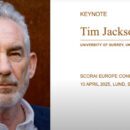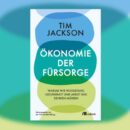
System Dynamics | FALSTAFF
Financial Assets and Liabilities in a Stock-Flow consistent framework
Working together over the last four years, Tim Jackson and Peter Victor have begun to develop a consistent approach to an ecological macroeconomics. Their broad approach draws together three primary spheres of modelling interest and explores the interactions between them. These spheres of interest are:
- the ecological and resource constraints on economic activity;
- a full account of production, consumption, employment and public finances in the ‘real economy’ at the level of the nation state;
- a comprehensive account of the money economy, including the main interactions between financial agents, and the creation, flow and destruction of the money supply itself.
In order to explore these aspects of the economy Tim Jackson and Peter Victor have developed a dedicated system dynamics model of Financial Assets and Liabilities in a Stock-Flow consistent Framework (FALSTAFF). FALSTAFF contains a simplified representation of the real economy and a comprehensive (stylized) account of the financial economy. There are several specific aims for FALSTAFF:
- to illustrate the real and financial implications of the shift towards green investment;
- to develop a coherent financial architecture in the context of shifting investment patterns;
- to explore monetary reform to facilitate the transition to a sustainable economy; and
- to test the viability of a transition to a stationary (non-growing economy)
Study | Does interest-bearing debt create a ‘growth imperative’?
An early application of the FALSTAFF model addresses the question of whether a capitalist economy with interest-bearing money can ever sustain a ‘stationary’ (or non-growing) state, or whether, as often claimed, capitalism has an inherent ‘growth imperative’ which arises from the creation of money as interest-bearing debt. ![]() A Working Paper describes a simplified version of FALSTAFF and uses this version of the model to explore the potential for stationary state outcomes in an economy with balanced trade, debt-based money, and private equity.
A Working Paper describes a simplified version of FALSTAFF and uses this version of the model to explore the potential for stationary state outcomes in an economy with balanced trade, debt-based money, and private equity.
Contrary to claims in the literature, the research finds that neither credit creation nor the charging of interest on debt create a ‘growth imperative’ in and of themselves. It shows further that it is possible to move from a growth path towards a stationary state without either crashing the economy or dismantling the system. The model supports critiques of austerity and underlines the value of countercyclical spending by government. Nonetheless, there remain several good reasons to support the reform of the monetary system.
Run FALSTAFF
Interested readers can explore the implications for themselves in the online beta version of FALSTAFF on the ISEE systems website.
Publications
Jackson T, Gallant B and S Mair 2023. Towards a Model of Baumol’s Cost Disease in a Post Growth Economy—developments of the FALSTAFF stock-flow consistent (SFC) model. CUSP Working Paper No. 37. Guildford: Centre for the Understanding of Sustainable Prosperity.
Jackson, T, Victor, P and A Asjad Naqvi 2016. Towards a Stock – Flow Consistent Ecological Macroeconomics. WWW for Europe: Work Package 205, Milestone 40 “Report on model results including additional policies to counter averse effects”. Working Paper no 114.
Jackson, T and P Victor 2015. Does credit create a growth imperative? A quasi-steady state economy with interest-bearing debt. Ecological Economics, Vol 120, pp. 32–48.
Jackson, T and P Victor 2015. Credit creation and the ‘growth imperative’ – a quasi- stationary economy with debt-based money. PASSAGE Working Paper 15/01.





